Disclaimer: This post may contain Amazon affiliate links. Sudachi earns a small percentage from qualifying purchases at no extra cost to you. See disclaimer for more info.
What is Nanban Soba/Kamo Seiro?
Kamo Nanban (also known as Kamo Seiro) is a Japanese soba noodle dish served in a hot broth with duck meat and chunky Japanese leeks.
Duck meat is rarely used in Japanese cooking. However, because duck meat is very fatty, the juices mixed into the broth result in a delicious and rich soup that is packed with umami. It compliments the simple taste of soba noodles perfectly!
Since the Edo period (1600 – 1868), soba restaurants have used the term “Nanban” to refer to Japanese leeks. This term originated from the fact that people and things that came from southern countries were commonly called “Nanban” at that time. Hence, vegetables like leek, chili pepper, and pumpkin brought to Japan were also referred to as “Nanban”.
Some believe that those foreign traders used to eat leeks to stay healthy, and that’s why people in soba restaurants began to use the term “Nanban” for Japanese leeks.
It is worth mentioning that in Osaka and other parts of western Japan, the same dish is called “Kamo Nanba.” There are two theories about the origin of the name. The first theory suggests that the name comes from the word “Nanban,” but it has changed over time. The second theory states that it was named after Nanba, Osaka, which was known for producing Japanese leeks during the Edo period.
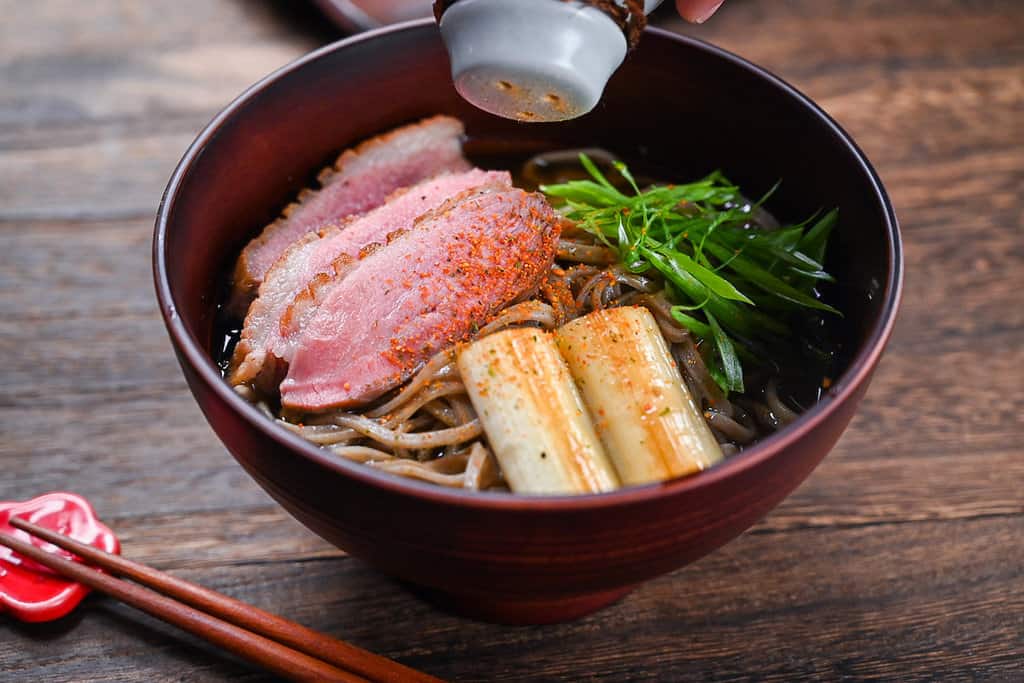

How I Developed This Recipe
Indeed, duck isn’t as commonly used in Japanese cuisine as other proteins, but its unique flavor offers incredible possibilities. Combining the rich duck fat, umami-packed broth, and wholesome soba noodles creates an exceptional dish.
In developing this recipe, my primary focus was to enhance and harmonize the natural sweetness and robust flavors of both the duck and the soba. The goal was to create a dish where each ingredient complements the other, resulting in a deeply satisfying and flavorful experience.
I’m proud to say that this duck soba soup recipe ranks among my top 10 personal favorite creations. I highly encourage you to try this recipe and experience the unique combination for yourself!
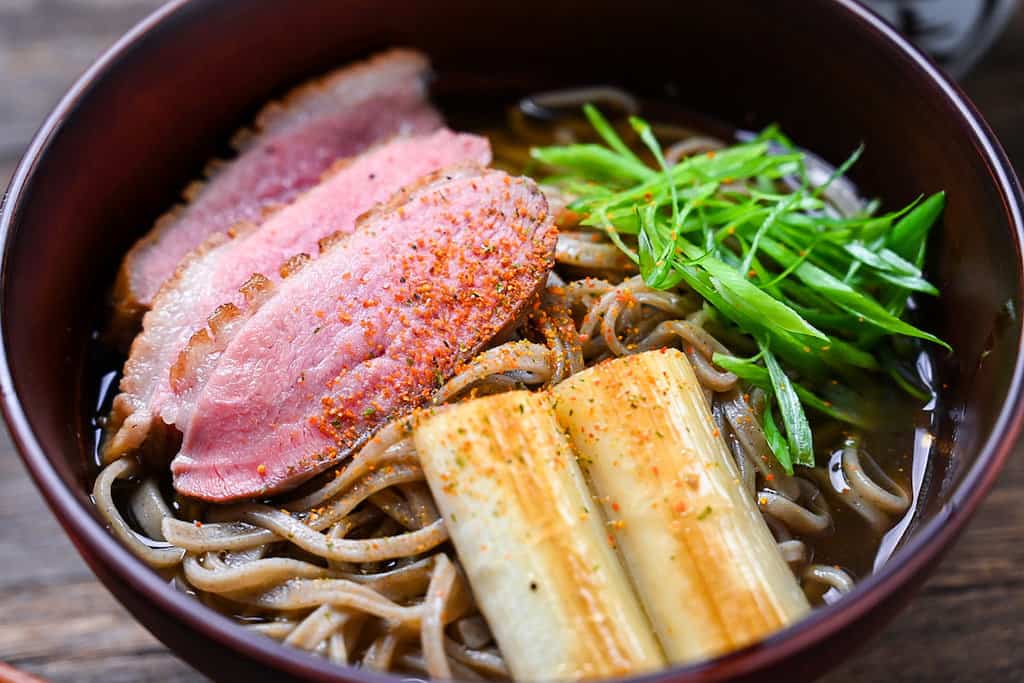
Ingredients & Substitution Ideas
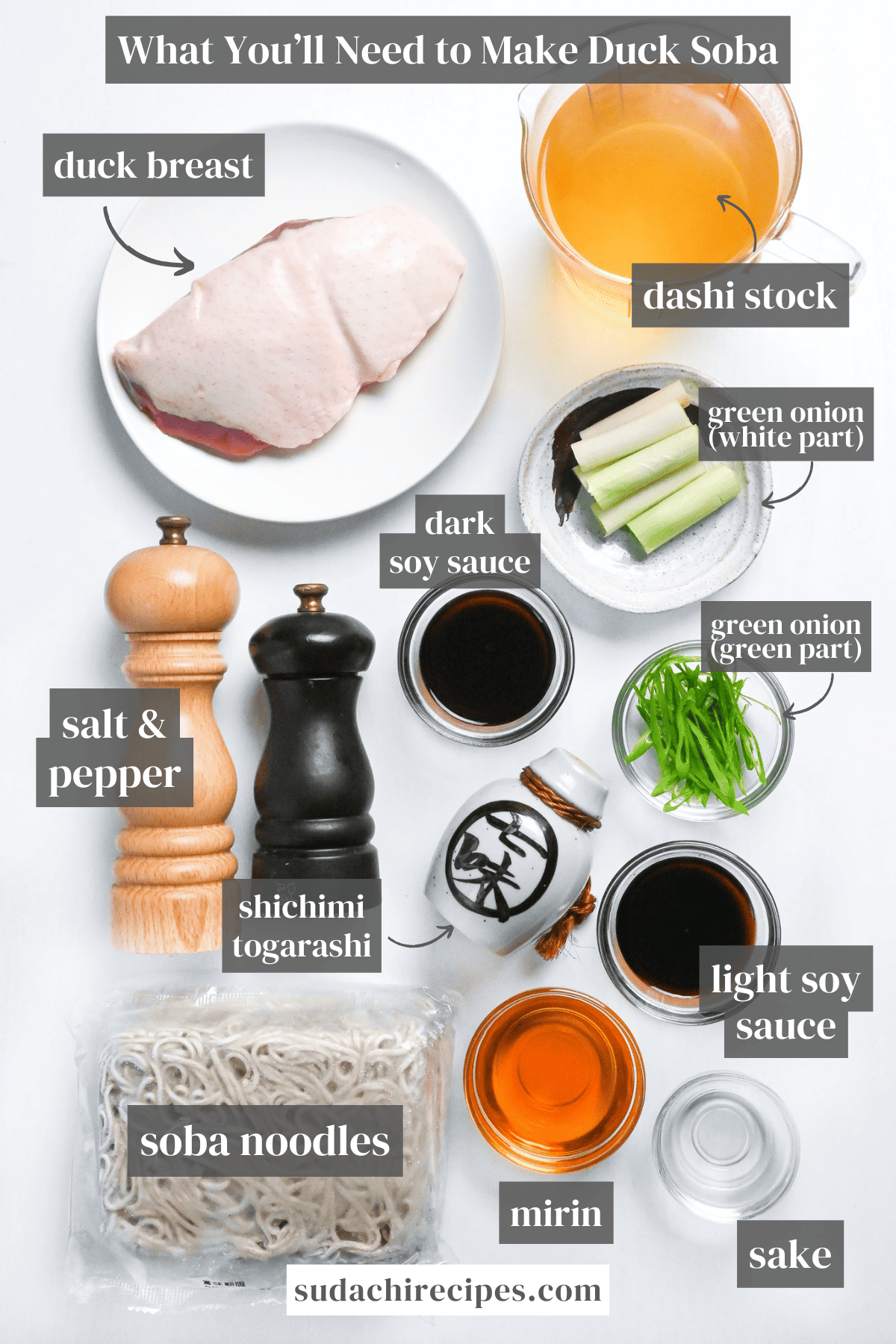
- Soba Noodles: Earthy noodles made with buckwheat. Dried noodles are the most affordable and convenient option.
- Duck Breast Skin On: Duck is very hard to find in Japan, so I used imported frozen Hungarian duck breast.
- Japanese Leeks (Naganegi): While this variety is rare outside Japan, regular leeks make a suitable substitute.
- Dashi Broth: The core of the dish’s flavor. Choose from simple awase dashi, vegan dashi, or use instant dashi granules or packets for quicker preparation.
- Dark & Light Soy Sauce: The recipe incorporates both light and dark soy sauce. Refer to my soy sauce guide for detailed information on their differences and brand recommendations.
- Mirin: Hon Mirin (本みりん), like Hinode Hon Mirin, is ideal for an authentic Japanese flavor. To understand the nuances between hon mirin and other varieties, consult my detailed mirin guide.
- Sake: Unsalted drinking sake is preferred for its clean taste, but cooking sake can be used with an adjustment in salt content. For more on sake types and substitutions, consider referring to my ‘Sake 101’ article.
- Finely Chopped Green Onions: Use the green part as a fresh garnish.
- Japanese Chili Powder (Shichimi Togarashi): Adds a subtle spice and complexity as a garnish.
Curious about the exact brands and products that bring my recipes to life? Discover the brands and ingredients behind my recipes at the Sudachi Amazon Storefront. Explore my handpicked pantry essentials and find your next kitchen favorites!
Jump to Full Recipe Measurements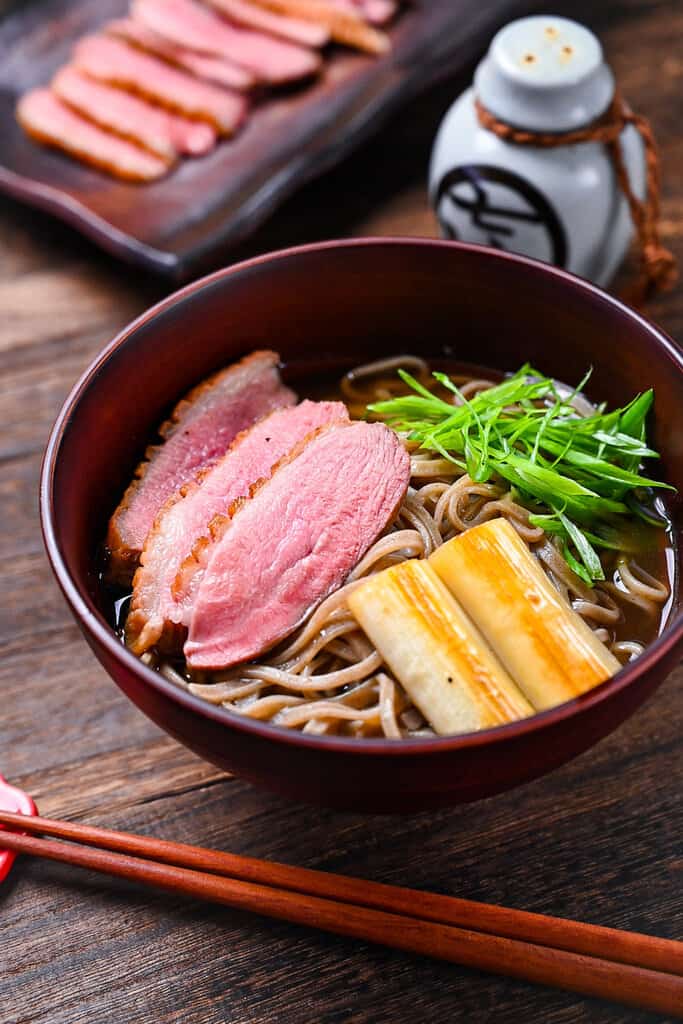
Visual Walkthrough & Tips
Here are my step-by-step instructions for how to make Kamo Nanban Soba at home. For ingredient quantities and simplified instructions, scroll down for the Printable Recipe Card below.
Pat the duck breast dry.
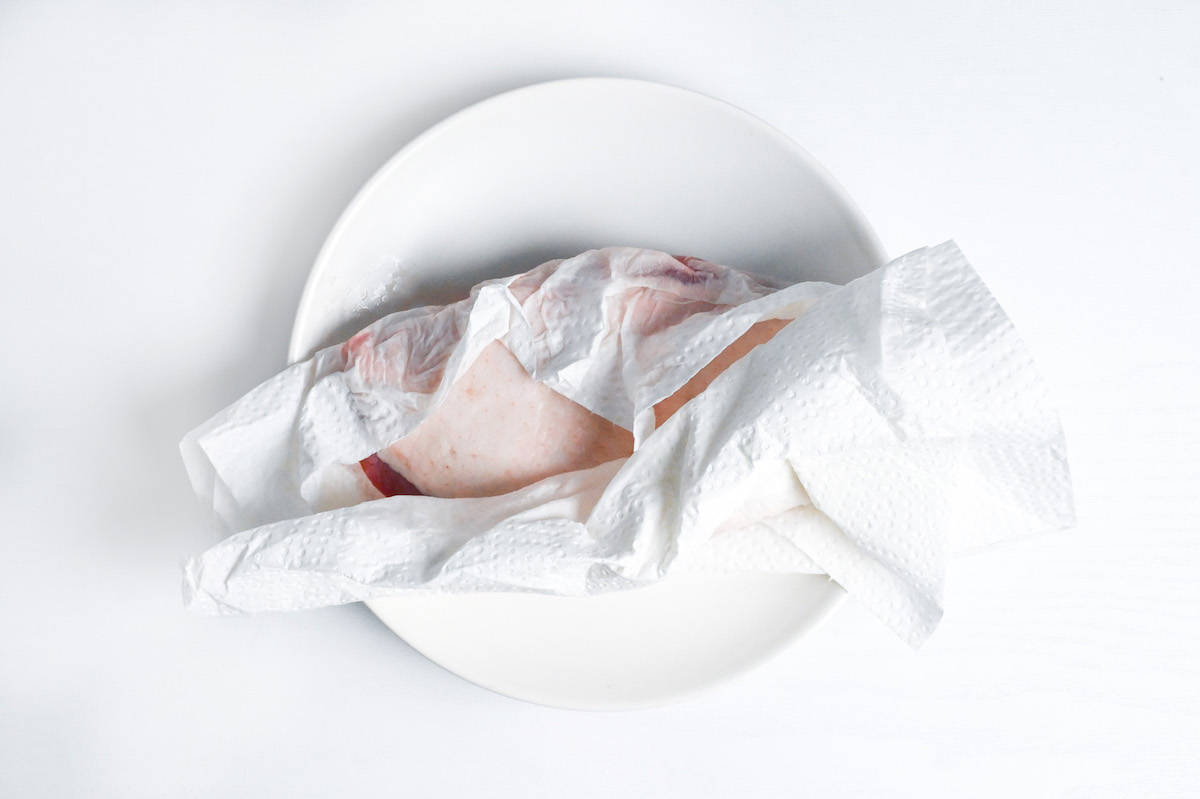
Make shallow diagonal cuts on the fat, then score in the opposite direction.
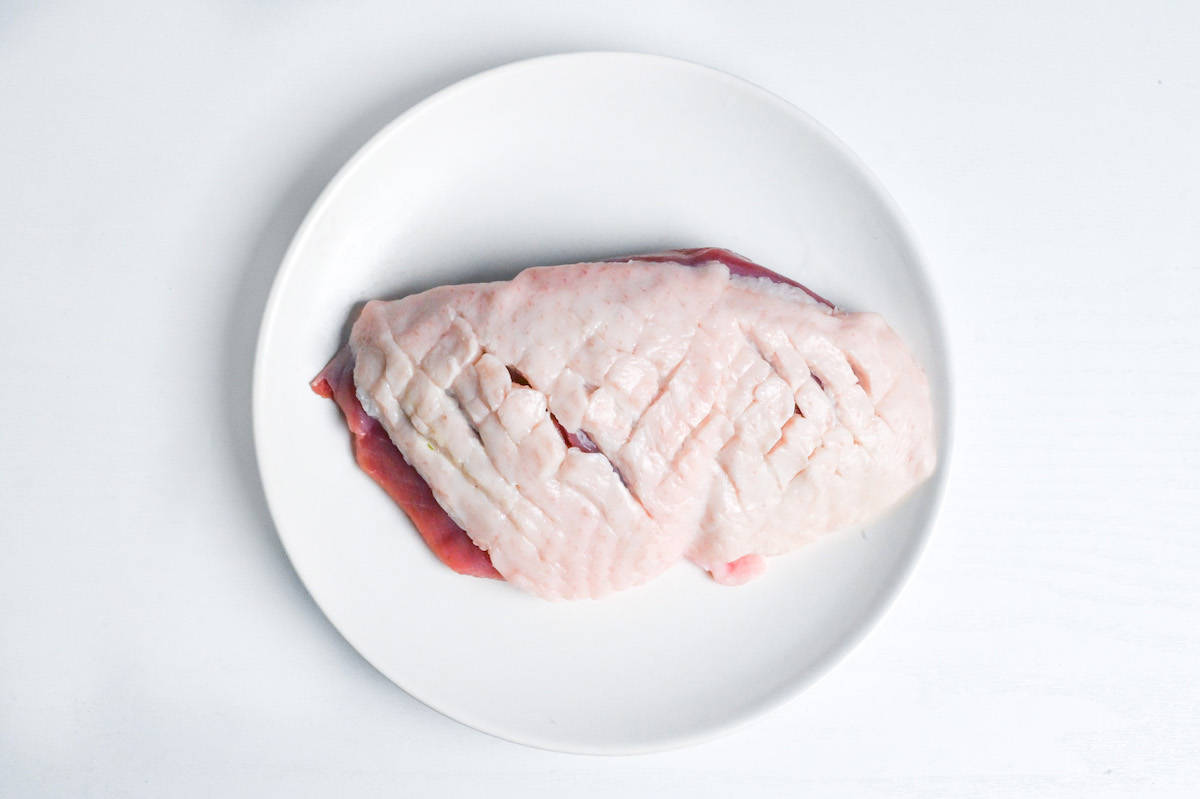
Season both sides with salt and pepper.
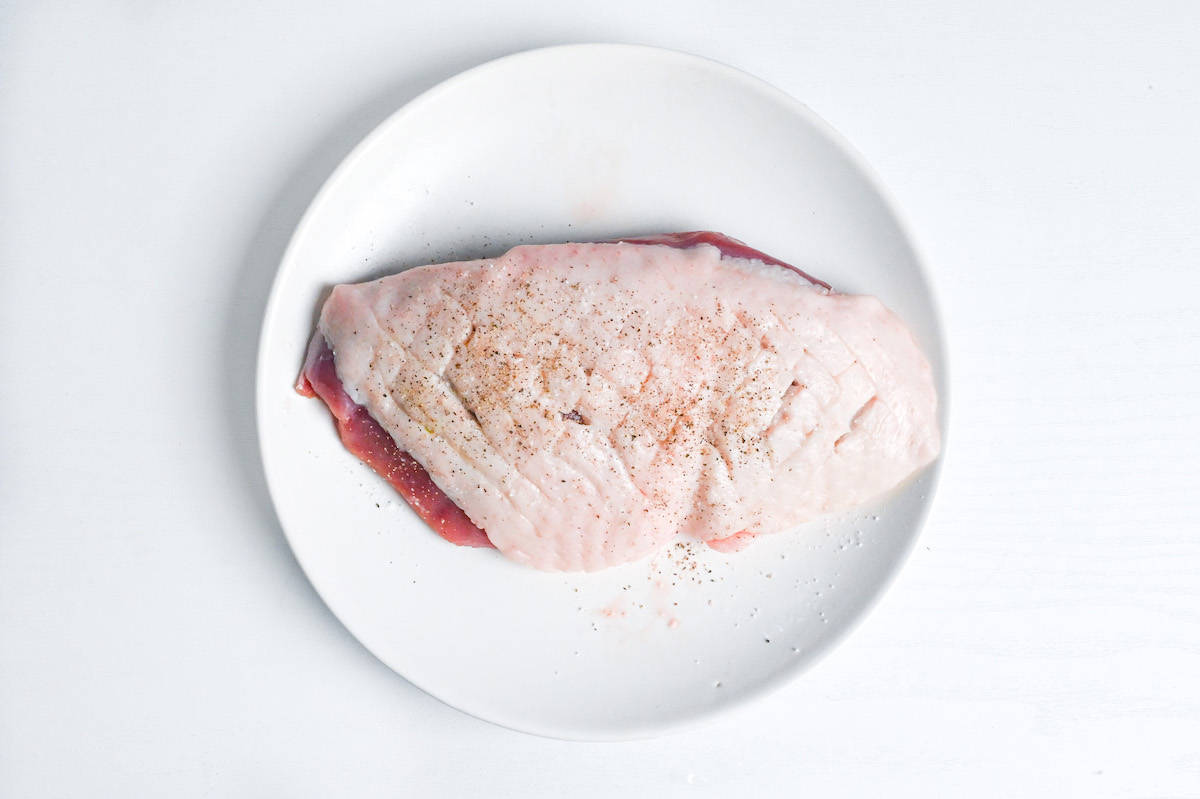
Place the duck skin-side down in a cold frying pan. Cook over medium heat for 4 minutes.
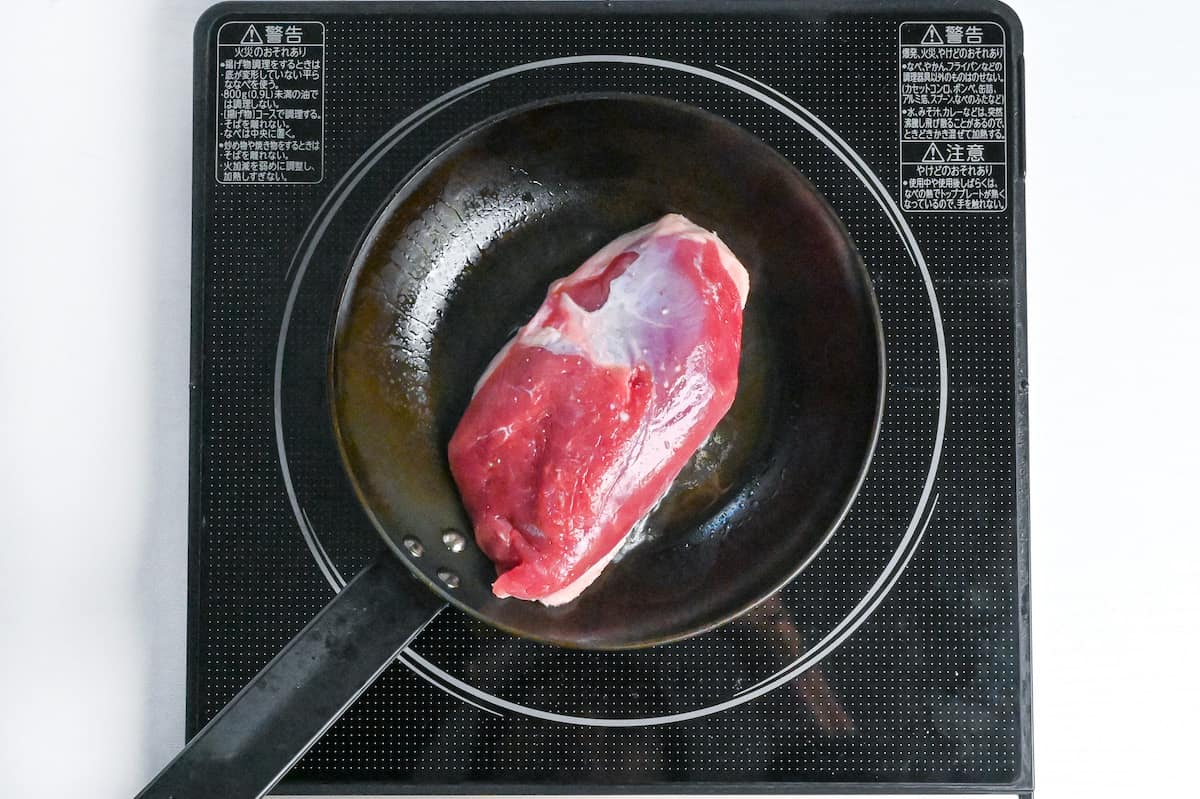
Then flip and cook the other side for 30 seconds.
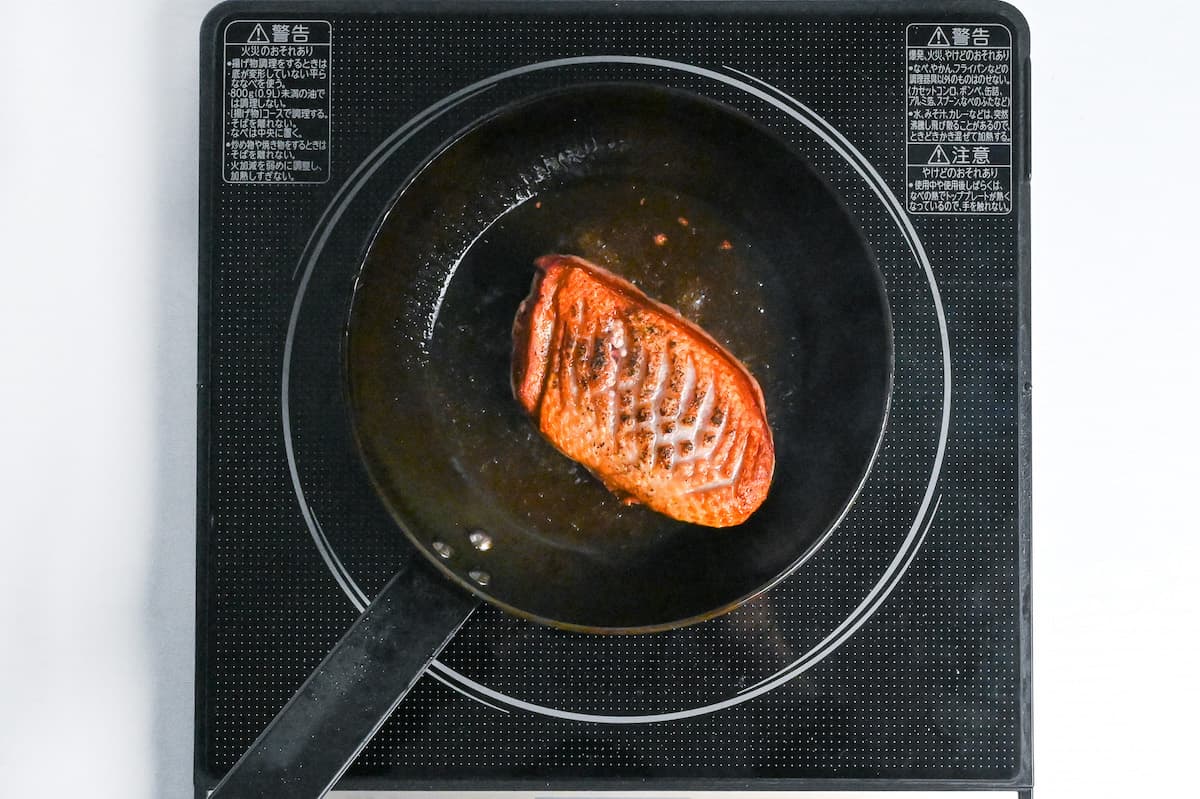
Remove and wrap in foil, resting for 3 minutes.
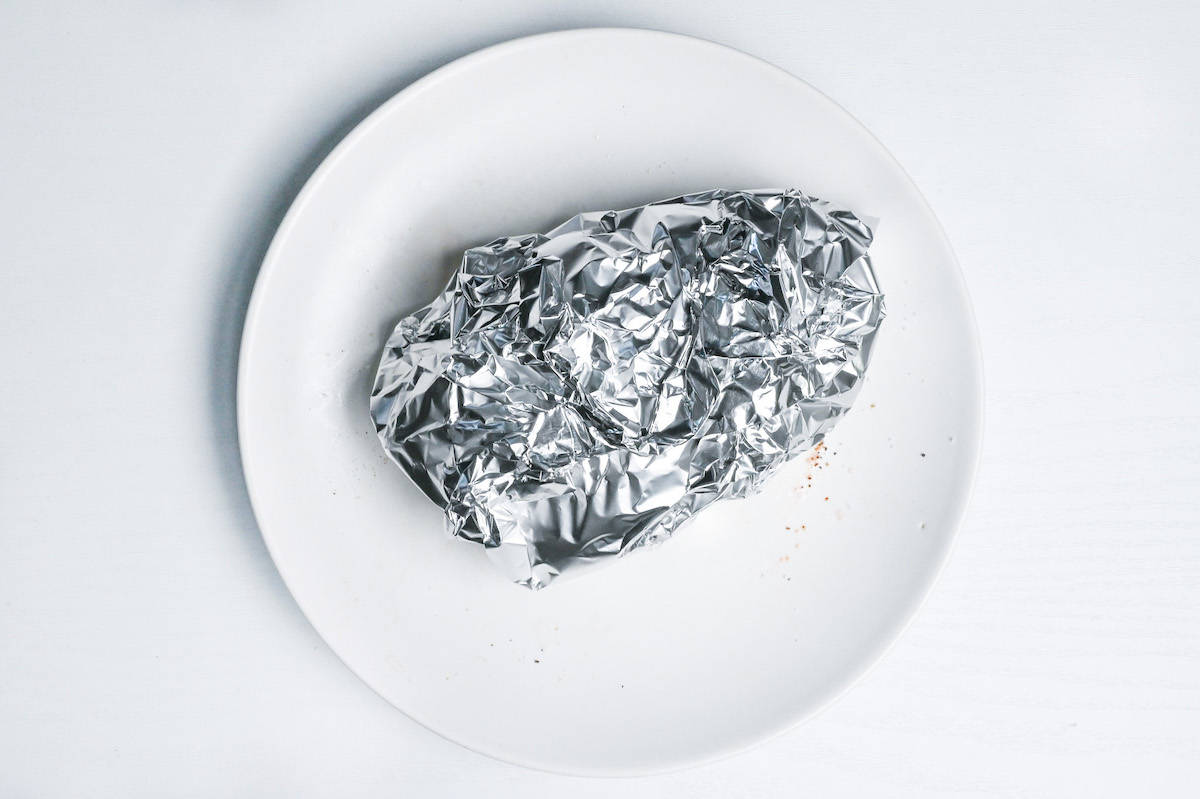
Return the duck to the pan, skin-side down, and fry for 3 minutes, basting with pan juices.
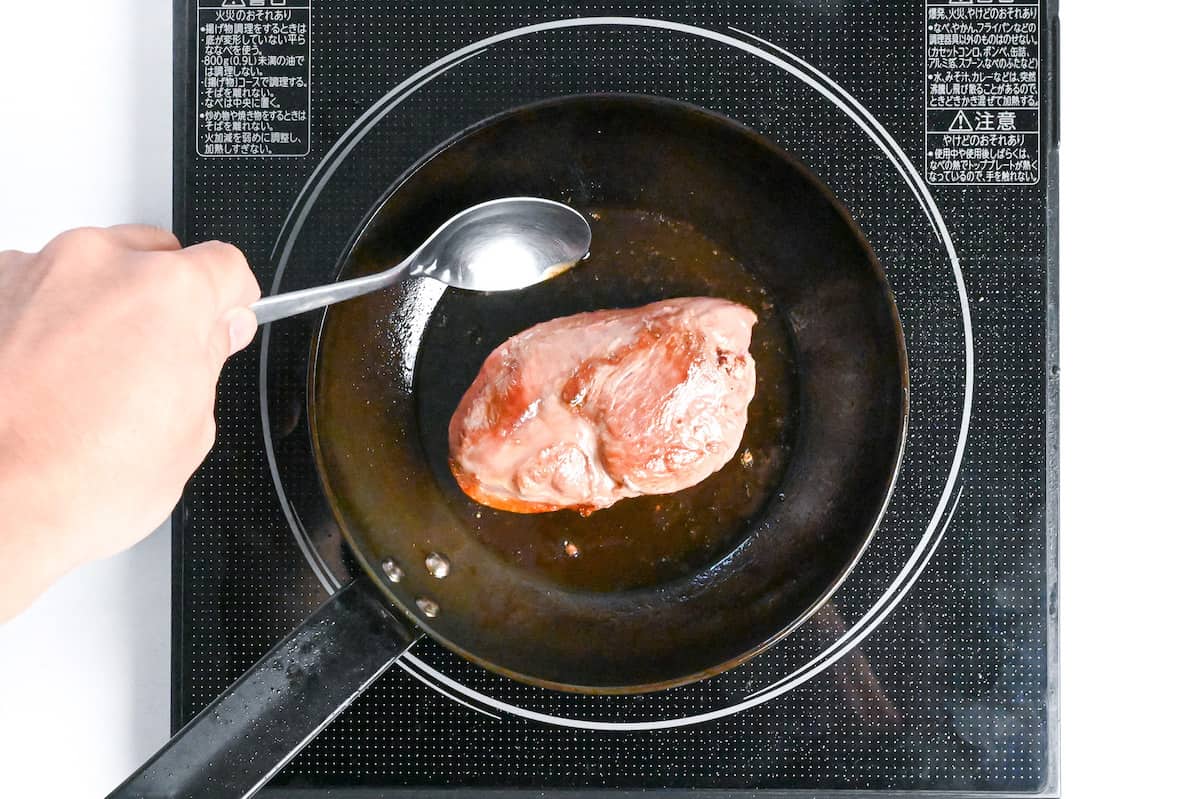
Flip and cook for another 30 seconds.

Wrap again in foil and let it rest.
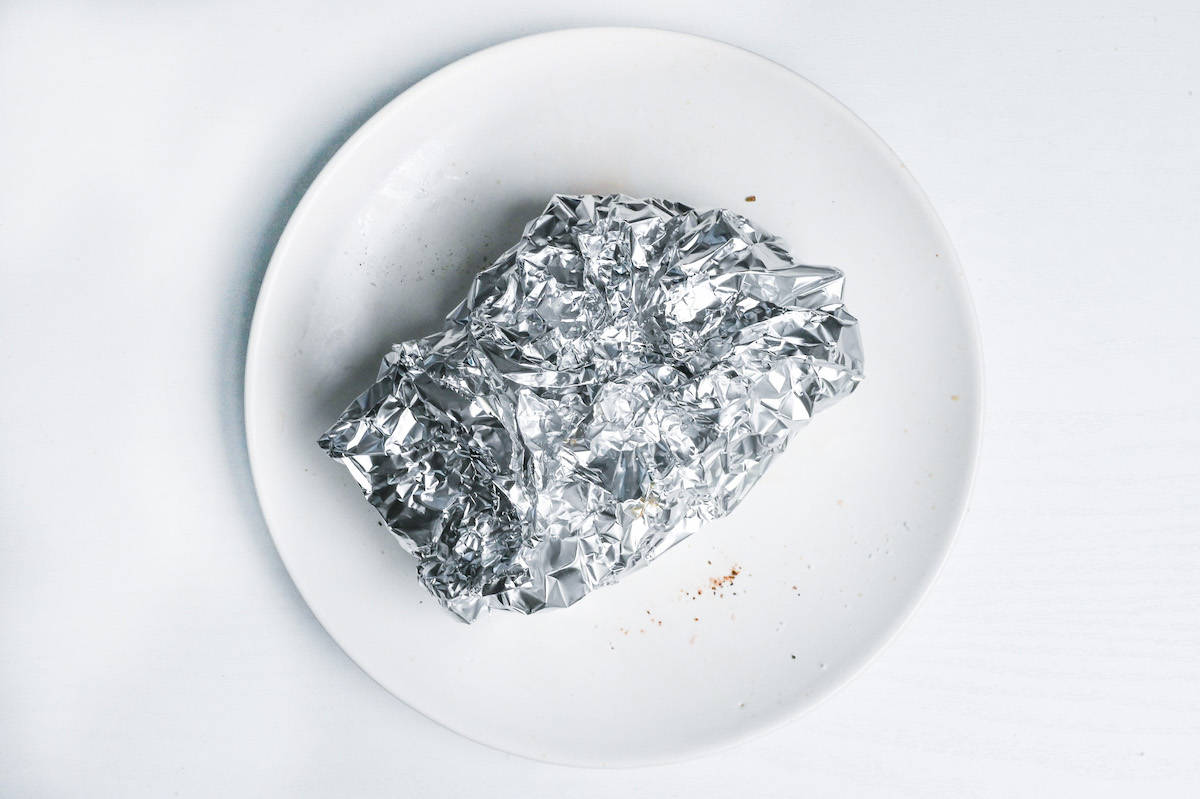
Cook soba noodles as per package instructions.
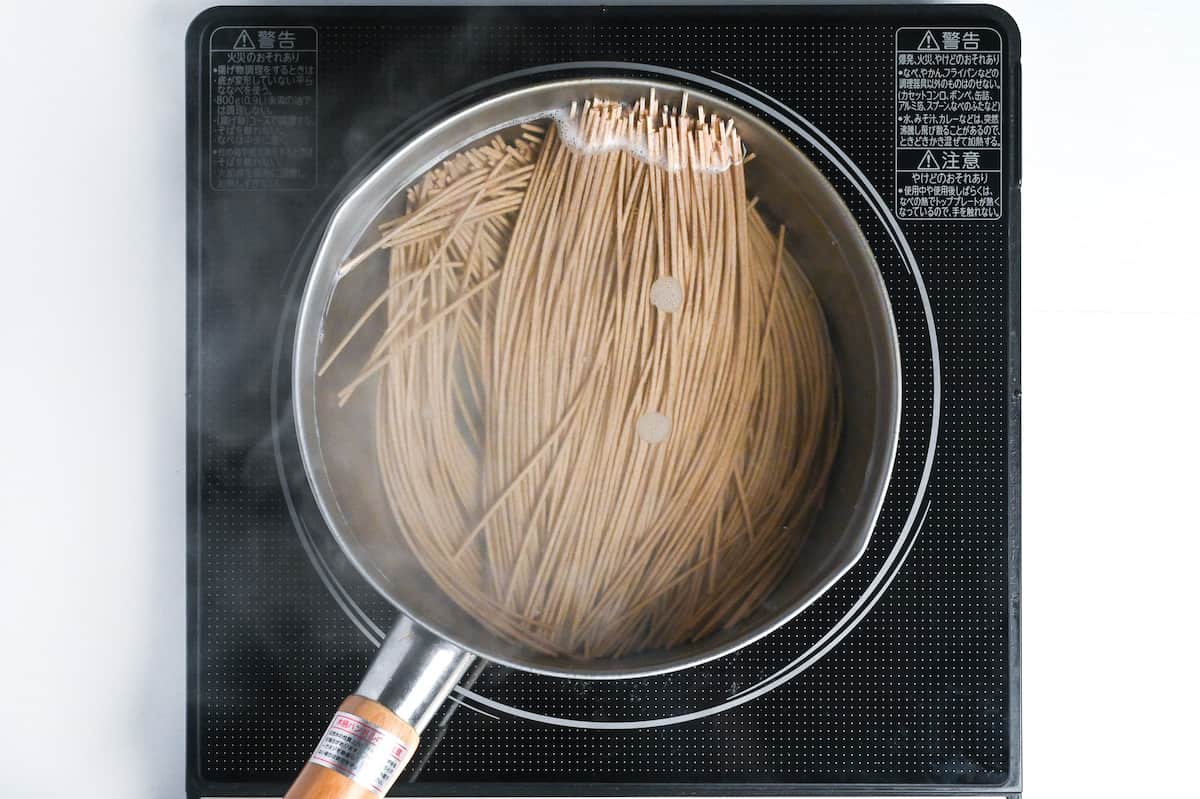
Fry leeks in duck fat until lightly charred.
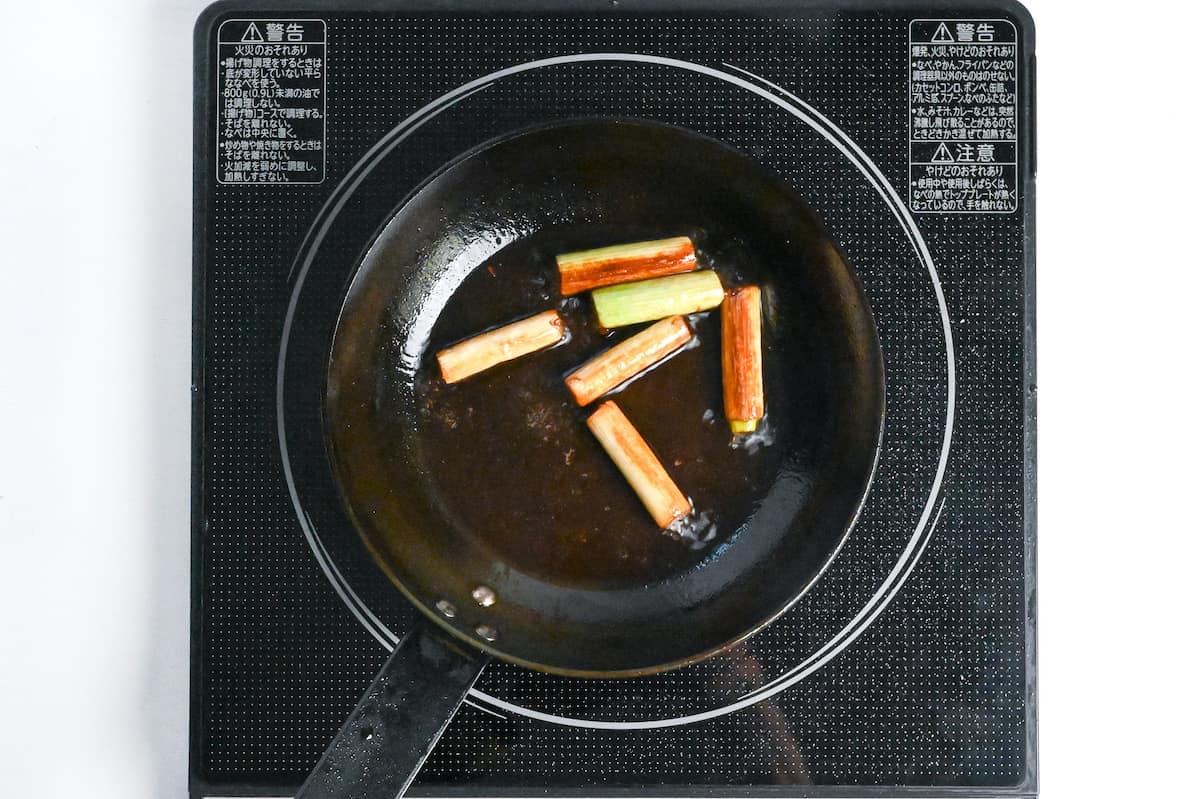
Add the leeks, dashi stock, dark and light soy sauce, mirin, and sake to a pot.
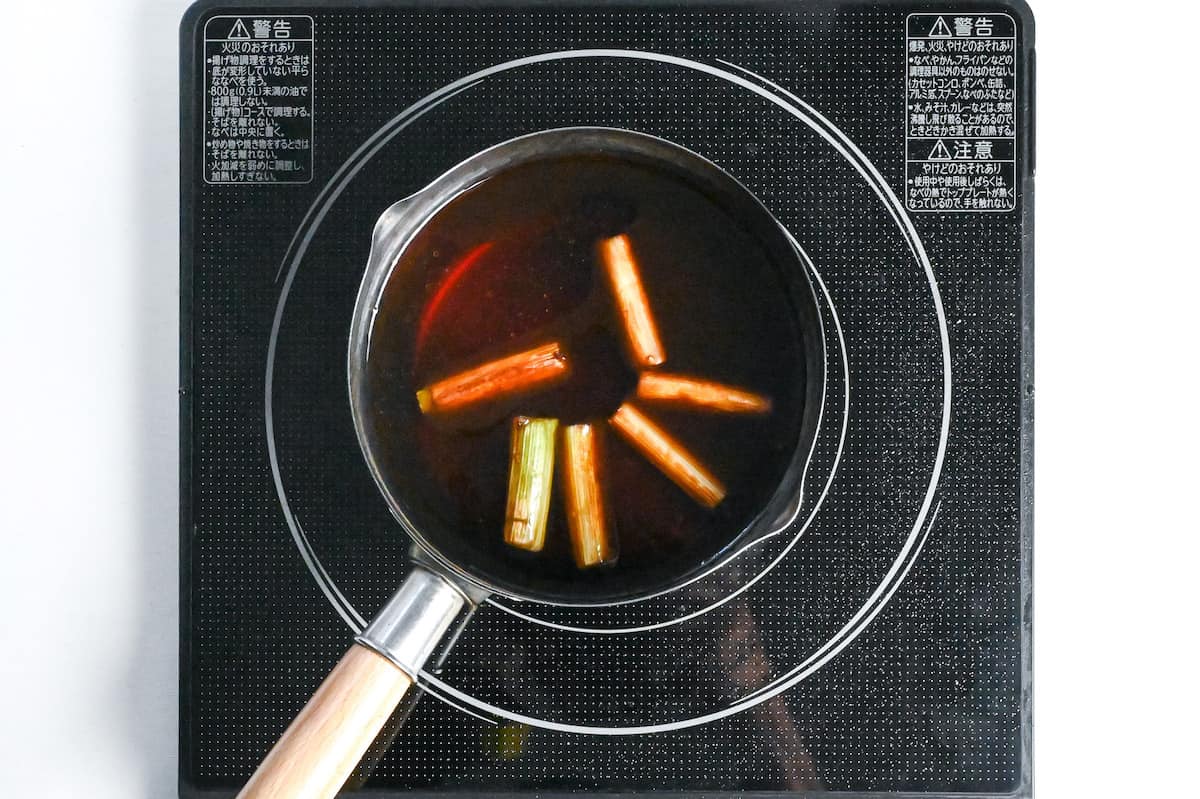
Boil for 1-2 minutes to cook off alcohol.
Slice the duck breast thinly, and divide cooked soba noodles into bowls.
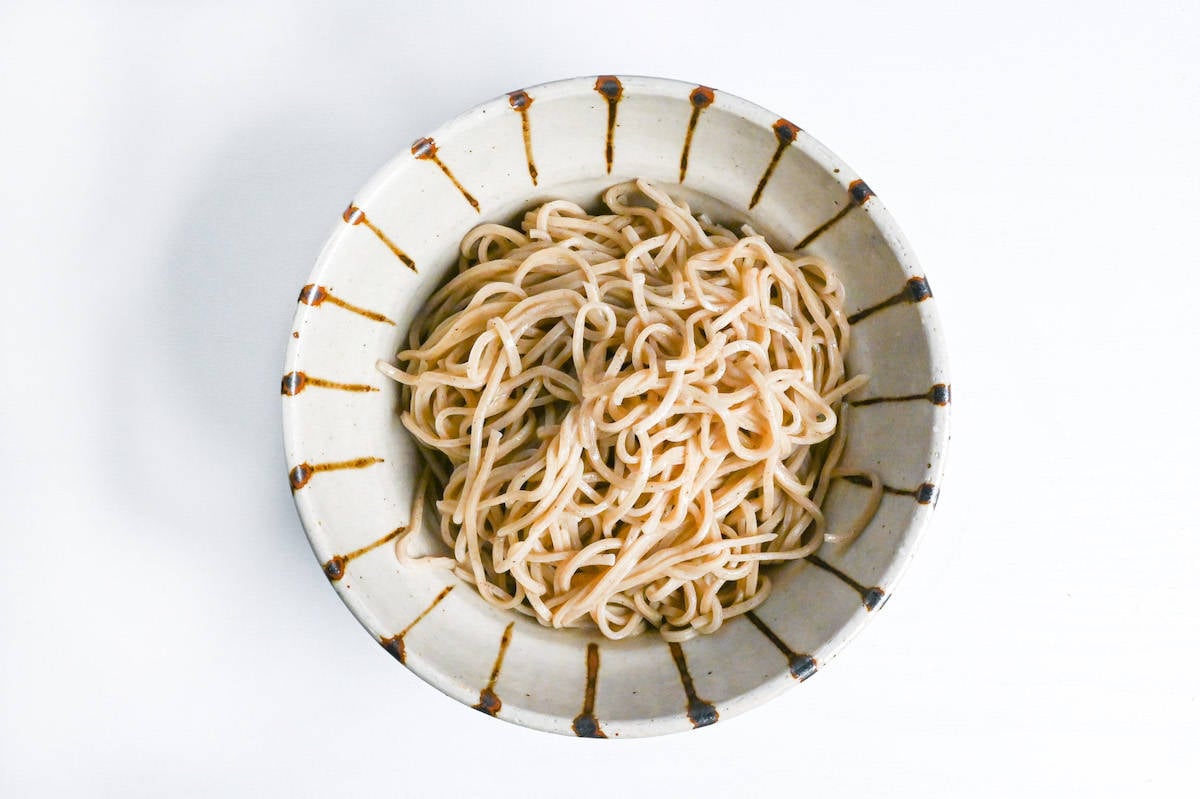
Pour the broth over the noodles, adding leeks and duck slices. Garnish with chopped green onions and shichimi if desired.
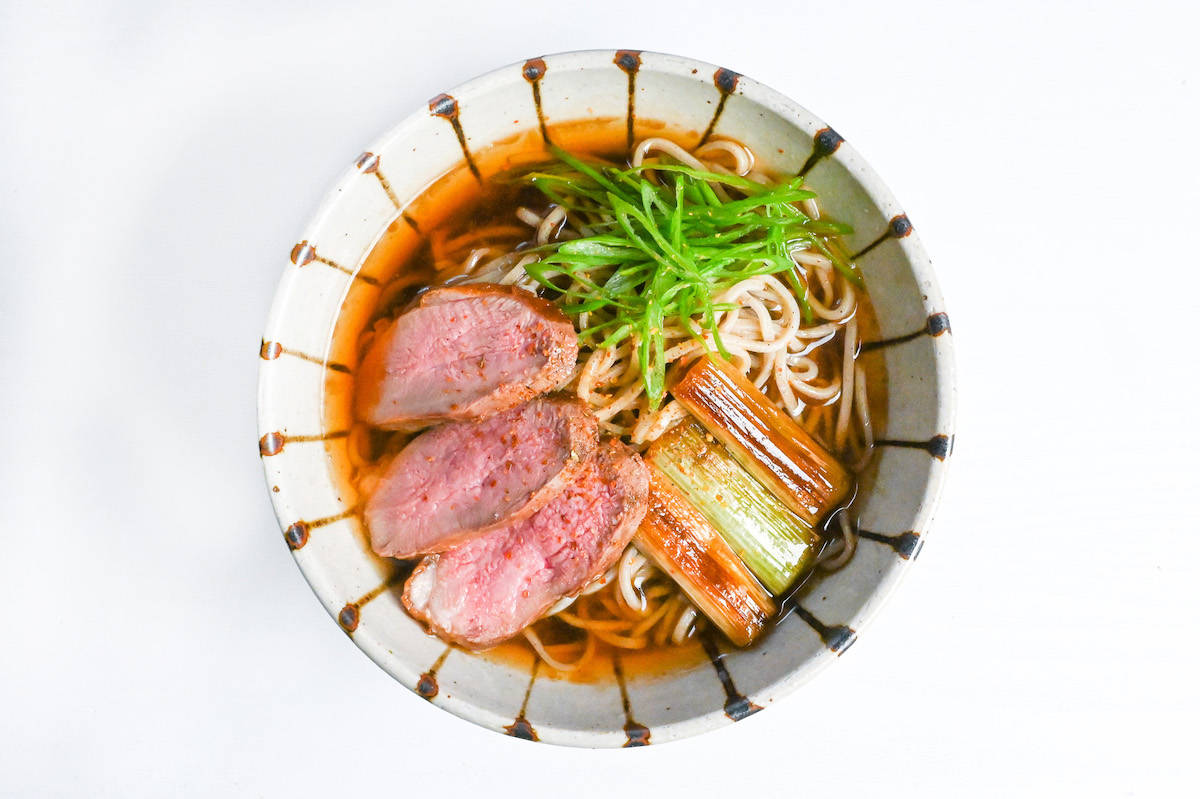

I hope you enjoy this Duck Soba recipe! If you try it out, I’d really appreciate it if you could spare a moment to let me know what you thought by giving a review and star rating in the comments below. It’s also helpful to share any adjustments you made to the recipe with our other readers. Thank you!
More Japanese Noodle Recipes
- Zaru Soba (Cold Buckwheat Noodles with Homemade Dipping Sauce)
- Nagasaki Champon Ramen Noodles (Ringer Hut Style)
- Taiwan Mazesoba (Nagoya’s Spicy Brothless Ramen)
- Soba Noodle Salad with Summer Vegetables
- 15 Minute Spicy Tsukemen (Dipping Ramen)
Want more inspiration? Explore my Japanese Noodle Recipe Roundup Post for a carefully selected collection of tasty recipe ideas to spark your next meal!
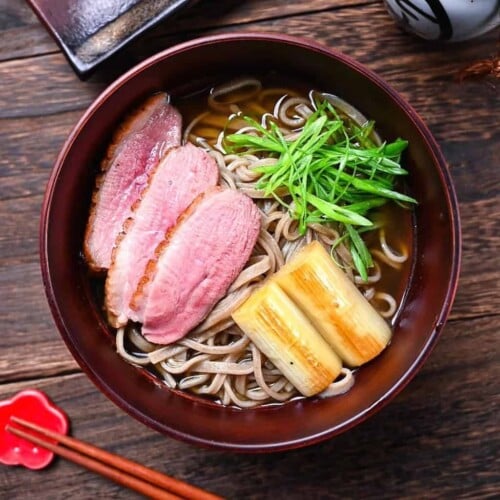
Duck soba noodles soup (kamo nanban soba)
Ingredients
- 4 portions soba noodles
- 300 g duck breast skin on
- 2 pinches salt
- 2 pinches ground black pepper
- 100 g Japanese leeks (naganegi) or regular leeks, white part, cut into 5cm pieces
- 1000 ml dashi stock
- 40 ml dark soy sauce
- 40 ml light soy sauce
- 100 ml mirin
- 2 tsp sake
- finely chopped green onions green part to garnish
- Japanese chili powder (shichimi togarashi) shichimi togarashi, to garnish
Instructions
- Take 300 g duck breast and pat the surface dry with kitchen paper.

- Make shallow diagonal incisions on the fat about 0.5cm apart, then repeat in the opposite direction to score.

- Sprinkle with a pinch of salt and pepper on both sides.

- Take a cold frying pan and place the duck inside with the skin-side facing down. Place the pan to the stove and turn on the heat to medium. Fry for 4 minutes. (Electric stoves take a bit longer to heat up so if you use electric stove, increase the cooking time accordingly.)

- Flip it over and fry on the other side for 30 seconds.

- Remove the duck breast from the pan and wrap it in foil. Leave it to rest for 3 minutes.

- Return the pan to the stove and heat it on medium. Once hot, place the duck breast back into the pan with the skin side down. Fry for 3 minutes while basting the surface with the excess fat and juices in the pan.

- Once 3 minutes are up, flip it over and fry on the other side for 30 seconds again.

- Remove from the pan and wrap it in the aluminum foil once again. Rest it in the foil until it’s time to cut and serve.

- Cook 4 portions soba noodles according to the instructions on the packaging.

- Pour the excess duck fat into a heatproof container and add the 100 g Japanese leeks (naganegi) cut into 5cm pieces to the pan. Fry until lightly charred all over.

- Add the 1000 ml dashi stock, 40 ml dark soy sauce, 40 ml light soy sauce, 100 ml mirin and 2 tsp sake to the pan with the leeks and bring to a boil. Bubble for 1-2 minutes to cook off the alcohol in the mirin and sake.

- Thinly slice the duck breast and divide the cooked soba noodles into serving bowls. Pour the broth over the top and place 2-3 pieces of leeks and 2-3 slices of duck breast to each bowl. Sprinkle with chopped green onion, shichimi (optional).

- Enjoy!
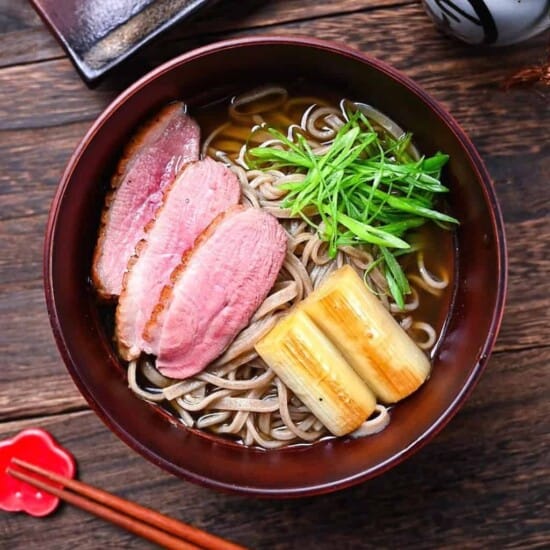



Simple. But … The dish is called kamo nanba soba for a reason: no green/spring onions, but _leeks_, which came from Nanba, a famous leek growing area near Nara. Use green/spring onions and the flavour will be quite different.
Hi, thank you for bringing up an interesting point.
I’ve just done further research in Japanese for Nanba Negi (難波葱), as I have never seen or tasted it where I’m from (Aichi Pref). Also, I didn’t know that Kamo Nanban is called Kamo Nanba in West (Osaka, Kyoto areas)!
I used white part of Naganegi to make this recipe, which I’ve always had trouble suggesting alternatives outside Japan. However, after reading your comment, I now believe leeks would be a far more suitable alternative than green or spring onions.
Again, I appreciate your contribution to the post! I will soon update this recipe and article to reflect these insights.
Yuto